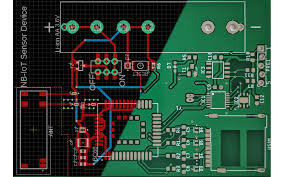This evolution has extended to traditional circuit board technology by the way for flexible printed circuit boards (PCBs). The benefits of flex PCBs vs rigid boards have come to be quite pronounced especially in the current age of flexibility, weight and space constraint application requirements.
Enhanced Flexibility
The main benefit of Flex PCBs is their flexibility Flex PCBs can be bent, folded, or twisted to fit into spaces that rigid PCBs cannot easily do making them perfect for small and odd shaped devices. For example, Flex PCBs are mandatory for wearable technology — its human body and rigid PCB can never meet.
Reduced Space and Weight
Flex PCBs are lighter in weight than their rigid counterparts due to the materials that they use (materials like polyimide or polyester film instead of traditional fiberglass). Flex PCBs are the perfect solution if weight reduction is a must; they can reduce as much as 70% of total weight which accounts for their popularity in aerospace and automotive areas where each gram counts. They can bend and fold as well, meaning that the overall footprint in applications is reduced by up to 60%.
Improved Durability
Flex PCBs resist shock and vibration better flex PCBS, on the other hand are bendable (obviously) which makes them generally more resistant to shock and vibration than rigid PCBS. This typifies them for usage in rugged environments such as military and outdoor telecommunication equipment. This flexibility reduces the stresses on the connections and components, resulting in greater reliability as well as longer product life.

Economical for Mass Production
Although the setup cost is higher for Flex PCB production, they are more cost effective during high volume production (since it has lower assembly costs). The integrally wired system eliminates the use of connectors and additional wiring harnesses, saving overall assembly time as well as reducing potential for connection failures. These savings can greatly reduce the additional initial cost in terms of mass production.
Higher Heat Dissipation
The heat dissipation of FPC is generally better than that of RPB. Heat Dissipation: The materials employed in Flex PCBs provide for better heat dissipation, which is critical in high-performance electronics where excess heat can degrade the performance of components and shorten their life. They reduce the need for expensive cooling solutions also, so win-win on weight and space saving!
Seamless Integration
The flexibility of Flex PCBs enables them to become an integral part in almost every design. It is this integration ability that makes them especially useful in a multi-function device where you have several functions combined into one unit. This is very useful for devices like smartphones and advanced medical equipment too because it packs more in the same space — functional-wise that is.
Turning to Flex PCB as an alternative, designers and engineers can design outside the constraints of traditional rigid PCBs with. In general, the specific characteristics of Flex PCBs not only increase product effectiveness and life span but also support imaginative designs making products lighter, smaller in size nicely compatible with harsh environment. To learn more, click here for an in-depth look at Flex PCB advantages and uses.